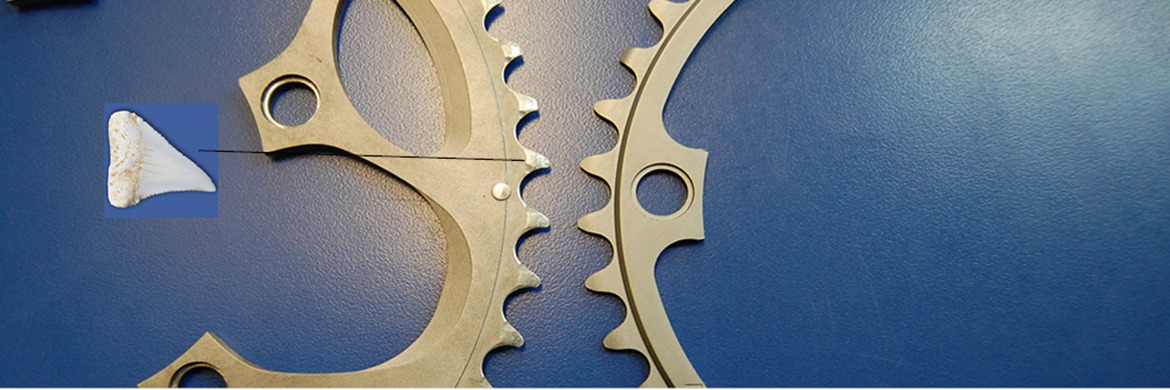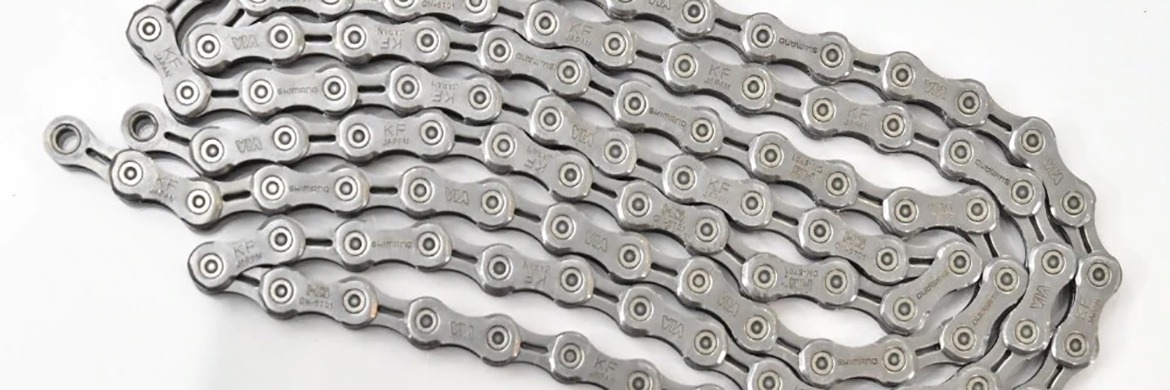
chains
The chain is the heart of your drivetrain. Knowing about chain maintenance and how to determine if it is worn is key to crisp shifting and prolonging the life of your expensive chainrings and cogs.
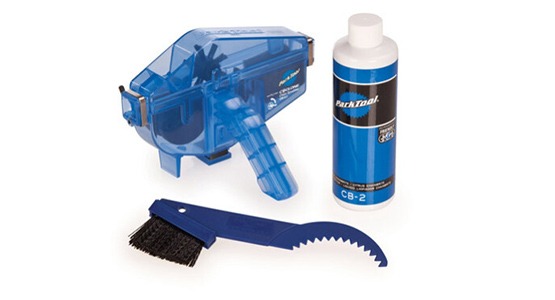
chain cleaning
One of the easiest ways to properly clean your chain is to load this Park Tool device with your favorite bike-specific degreaser or even Simple Green and start spinning the pedals to move the chain through the enclosed brushes and solution.
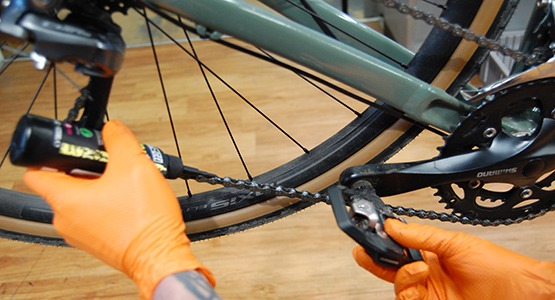
chain lubrication
Hold the lube bottle in the position shown and drizzle it on as you move the chain through its path. Let it soak in AND wipe off the excess.
Don't overdo it! Too much of a good thing is exactly that, and in the case of an over-lubed chain it can attract dirt and debris, which will lead to premature wear of the chain, cassette, and rings.
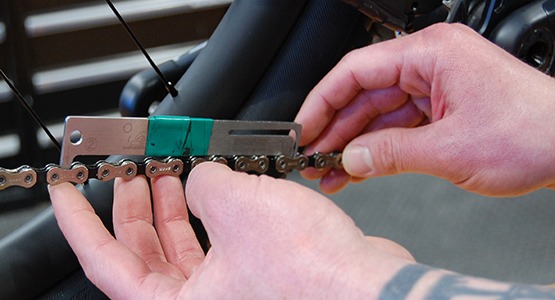
chain wear
Bicycle chains are a consumable product, just like tires and handlebar tape. Chain wear is known as stretch. The interface of the chain and the teeth of the cogs and rings is a precise fit. Over time, the chain plates stretch ever so slightly and the rollers don't engage the teeth cleanly. Riding your bike with a worn chain will prematurely wear out your cogs and rings, which are wildly more expensive to replace than your chain.
The tool at right is a chain wear indicator. See how it won't quite make the distance to drop into the chain on one end? That's because the chain is new and good. When the indicator drops into the chain and rests evenly on it, it shows the chain has worn and needs to be replaced.
Worn Out Rings
As previously mentioned, chainrings and cogs are way more expensive than chains. Replacing worn chains is the best way to prolong your expensive gear bits. They will wear out eventually, but you'll get a lot more life keeping that chain fresh.
So what do worn gear teeth look like? You'll sometimes hear our techs say "That chainring is sharktoothed" because that's pretty much how they look. The chain is pulling on the back of each tooth as you pedal and over time the metal wears on that side, creating a profile that looks like a shark tooth. Each month of the busy season, we have buckets of them that go to metal recycling.
Look at the photo below -- the ring on the left is worn, the ring on the right is new. Note the profile of the teeth in comparison.
